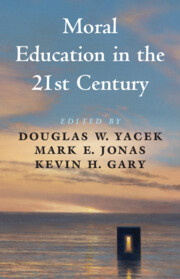Book contents
- Moral Education in the 21st Century
- Moral Education in the 21st Century
- Copyright page
- Contents
- Contributors
- Acknowledgments
- Chapter 1 Why Does Moral Education Matter in the 21st Century?
- Part I Historical Insights for Contemporary Moral Education
- Part II New Approaches to Moral Education
- Chapter 7 Liberal Authority and Moral Education
- Chapter 8 The Capability Approach as a Foundation for Moral Education
- Chapter 9 Recognition Theory and Moral Education
- Chapter 10 Practicing Care Ethics in the Current Context
- Chapter 11 A Non-Ideal Virtue Theory and the Centrality of Education
- Chapter 12 Pragmatist Moral Education
- Part III Responses to Contemporary Moral Problems
- Index
- References
Chapter 10 - Practicing Care Ethics in the Current Context
from Part II - New Approaches to Moral Education
Published online by Cambridge University Press: 01 June 2023
- Moral Education in the 21st Century
- Moral Education in the 21st Century
- Copyright page
- Contents
- Contributors
- Acknowledgments
- Chapter 1 Why Does Moral Education Matter in the 21st Century?
- Part I Historical Insights for Contemporary Moral Education
- Part II New Approaches to Moral Education
- Chapter 7 Liberal Authority and Moral Education
- Chapter 8 The Capability Approach as a Foundation for Moral Education
- Chapter 9 Recognition Theory and Moral Education
- Chapter 10 Practicing Care Ethics in the Current Context
- Chapter 11 A Non-Ideal Virtue Theory and the Centrality of Education
- Chapter 12 Pragmatist Moral Education
- Part III Responses to Contemporary Moral Problems
- Index
- References
Summary
Care ethics is a relational approach to moral education and learning to care is a critical educational aim. Research on care ethics in practice in educational settings has clarified what it means to care for students and has led to critiques that inform what care might look like in practice across differences, such as race, class, and gender. In light of these movements in care ethics, a current societal moral dilemma, the global teacher exodus, is examined as a failure to care for teachers so that they might care for students.
- Type
- Chapter
- Information
- Moral Education in the 21st Century , pp. 171 - 191Publisher: Cambridge University PressPrint publication year: 2023

